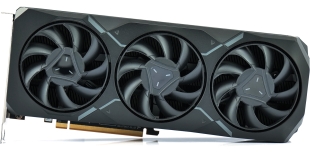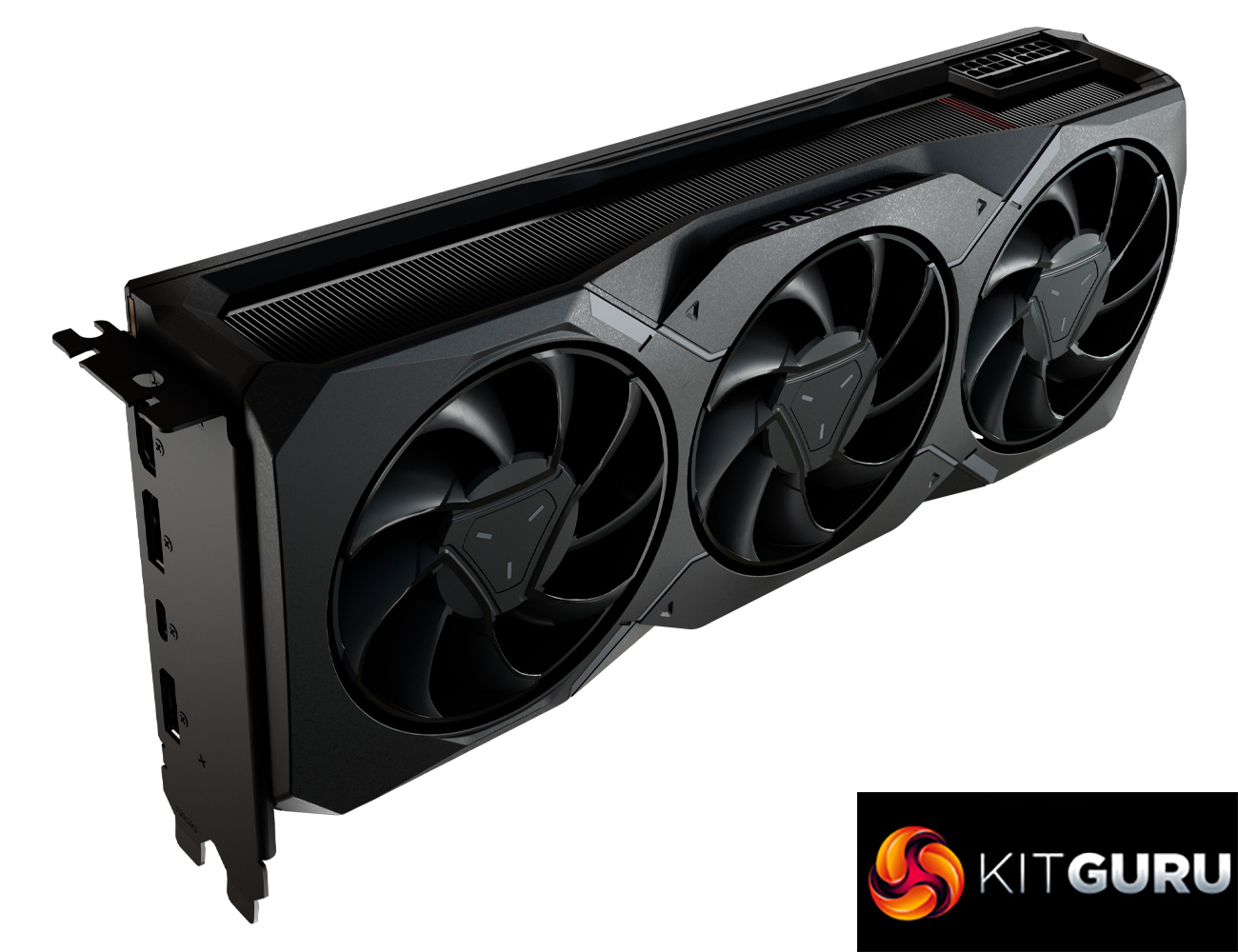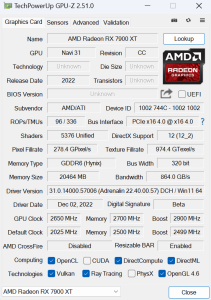
Launching alongside AMD's flagship RX 7900 XTX, today we can present our review of the RX 7900 XT, the least expensive of the two 7900 series cards, though it still hits the market at £899.99. Offering a cut-down Navi 31 experience, AMD will hope that the 7900 XT can entice those who want a high-end gaming GPU, but perhaps don't want to go all out on an XTX. We're certainly not sure about the name scheme, but can the XT do enough to earn a recommendation?
Announced alongside the RX 7900 XTX at AMD's event in Las Vegas, the Radeon RX 7900 XT has gone under the radar somewhat. In that initial announcement, the company didn't show a single benchmark for the XT, focusing instead on the XTX, and it was only a couple of weeks later than we saw the first 7900 XT benchmarks.
Built on the same RDNA 3 architecture and Navi 31 silicon as the full-fat XTX model, the 7900 XT has simply been trimmed back somewhat, offering fewer cores and less memory in a lower-power package. But will it be enough to step out from the XTX's shadow? That's what we will find out today…
It's also worth noting that while this is a standalone review for the RX 7900 XT, we do also have a day one review for the RX 7900 XTX, and you can find that HERE.
If you want to read this review as a single page, click HERE.
| RX 7900 XTX | RX 7900 XT | RX 6950 XT | RX 6900 XT | RX 6800 XT | RX 6800 | |
| Architecture | RDNA 3 | RDNA 3 | RDNA 2 | RDNA 2 | RDNA 2 | RDNA 2 |
| Manufacturing Process | 5nm GCD + 6nm MCD | 5nm GCD + 6nm MCD | 7nm | 7nm | 7nm | 7nm |
| Transistor Count | 57.7 billion | 57.7 billion | 26.8 billion | 26.8 billion | 26.8 billion | 26.8 billion |
| Die Size | 300 mm² GCD 220 mm² MCD | 300 mm² GCD 220 mm² MCD | 519 mm² | 519 mm² | 519 mm² | 519 mm² |
| Ray Accelerators | 96 | 84 | 80 | 80 | 72 | 60 |
| Compute Units | 96 | 84 | 80 | 80 | 72 | 60 |
| Stream Processors | 6144 | 5376 | 5120 | 5120 | 4608 | 3840 |
| Game GPU Clock | Up to 2300MHz | Up to 2000 MHz | Up to 2100MHz | Up to 2015MHz | Up to 2015MHz | Up to 1815MHz |
| Boost GPU Clock | Up to 2500 MHz | Up to 2400 MHz | Up to 2310MHz | Up to 2250MHz | Up to 2250MHz | Up to 2105MHz |
| ROPs | 192 | 192 | 128 | 128 | 128 | 96 |
| AMD Infinity Cache | 96MB | 80MB | 128MB | 128MB | 128MB | 128MB |
| Memory | 24GB GDDR6 | 20GB GDDR6 | 16GB GDDR6 18Gbps | 16GB GDDR6 16Gbps | 16GB GDDR6 | 16GB GDDR6 |
| Memory Bandwidth | 960 GB/s | 800 GB/s | 576 GB/s | 512 GB/s | 512 GB/s | 512 GB/s |
| Memory Interface | 384-bit | 320-bit | 256-bit | 256-bit | 256-bit | 256-bit |
| Board Power | 355W | 315W | 335W | 300W | 300W | 250W |
First, let's take a quick look at the specs. We've already covered the key figures in our announcement article, but it's worth recapping the core details here.
For starters, the RDNA 3 architecture has seen AMD transition to a chiplet-based design – a world first for a gaming GPU. We find a 300mm² Graphics Compute Die, based on TSMC's 5nm node, flanked by six 37mm² Memory Cache Dies (though one is disabled for the 7900 XT). In total, the Navi 31 GPU packs 57.7 billion transistors.
Internally, the GCD makeup hasn't been radically changed compared to what we saw with RDNA 2. While a full Navi 31 GPU packs in 96 Compute Units, the 7900 XT is cut down to 84 CUs, each of which houses 64 Steam Processors, for a total of 5376 shaders. There's also 84 Ray Accelerators – one per CU – and 192 ROPs.
As for clock speed, AMD has de-coupled the clocks, so the front-end and shaders can operate at different clock speeds in a bid to save power. With the RX 7900 XT, the shader clock features a rated game clock of up to 2000MHz, and a boost of up to 2400MHz.
Meanwhile, the memory configuration has taken a step forward. The RX 7900 XT packs 20GB of GDDR6 memory clocked at 20Gbps, operating over a 320-bit memory interface, for total memory bandwidth of 800 GB/s. 80MB of Infinity Cache is also present, which allows AMD to claim an ‘effective memory bandwidth' of up to 2900 GB/s.
Power draw for the RX 7900 XT is rated at 315W Total Board Power (TBP), but we are using our updated GPU power testing methodology in this review, so read on for our most detailed power and efficiency testing yet.
 KitGuru KitGuru.net – Tech News | Hardware News | Hardware Reviews | IOS | Mobile | Gaming | Graphics Cards
KitGuru KitGuru.net – Tech News | Hardware News | Hardware Reviews | IOS | Mobile | Gaming | Graphics Cards




